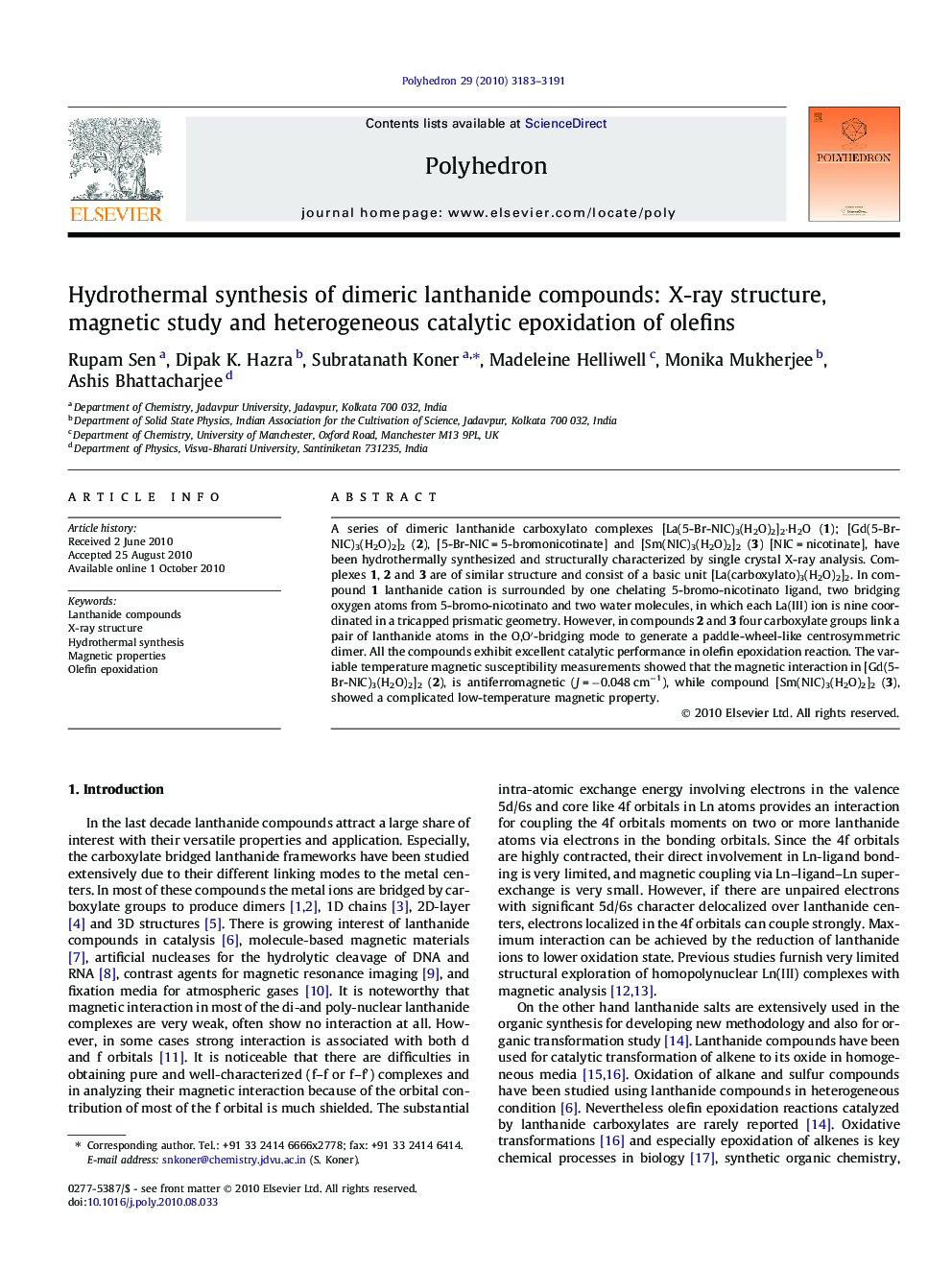| Article ID | Journal | Published Year | Pages | File Type |
|---|---|---|---|---|
| 1338529 | Polyhedron | 2010 | 9 Pages |
A series of dimeric lanthanide carboxylato complexes [La(5-Br-NIC)3(H2O)2]2·H2O (1); [Gd(5-Br-NIC)3(H2O)2]2 (2), [5-Br-NIC = 5-bromonicotinate] and [Sm(NIC)3(H2O)2]2 (3) [NIC = nicotinate], have been hydrothermally synthesized and structurally characterized by single crystal X-ray analysis. Complexes 1, 2 and 3 are of similar structure and consist of a basic unit [La(carboxylato)3(H2O)2]2. In compound 1 lanthanide cation is surrounded by one chelating 5-bromo-nicotinato ligand, two bridging oxygen atoms from 5-bromo-nicotinato and two water molecules, in which each La(III) ion is nine coordinated in a tricapped prismatic geometry. However, in compounds 2 and 3 four carboxylate groups link a pair of lanthanide atoms in the O,O′-bridging mode to generate a paddle-wheel-like centrosymmetric dimer. All the compounds exhibit excellent catalytic performance in olefin epoxidation reaction. The variable temperature magnetic susceptibility measurements showed that the magnetic interaction in [Gd(5-Br-NIC)3(H2O)2]2 (2), is antiferromagnetic (J = −0.048 cm−1), while compound [Sm(NIC)3(H2O)2]2 (3), showed a complicated low-temperature magnetic property.
Graphical abstractA series of dimeric lanthanide carboxylato complexes [La(5-Br-NIC)3(H2O)2]2·H2O (1); [Gd(5-Br-NIC)3(H2O)2]2 (2), [5-Br-NIC = 5-bromonicotinate] and [Sm(NIC)3(H2O)2]2 (3) [NIC = nicotinate], have been hydrothermally synthesized and structurally characterized. All the compounds exhibit excellent catalytic performance in olefin epoxidation reaction. The variable temperature magnetic susceptibility measurements showed that the magnetic interaction in [Gd(5-Br-NIC)3(H2O)2]2 (2), is antiferromagnetic (J = −0.048 cm−1).Figure optionsDownload full-size imageDownload as PowerPoint slide
